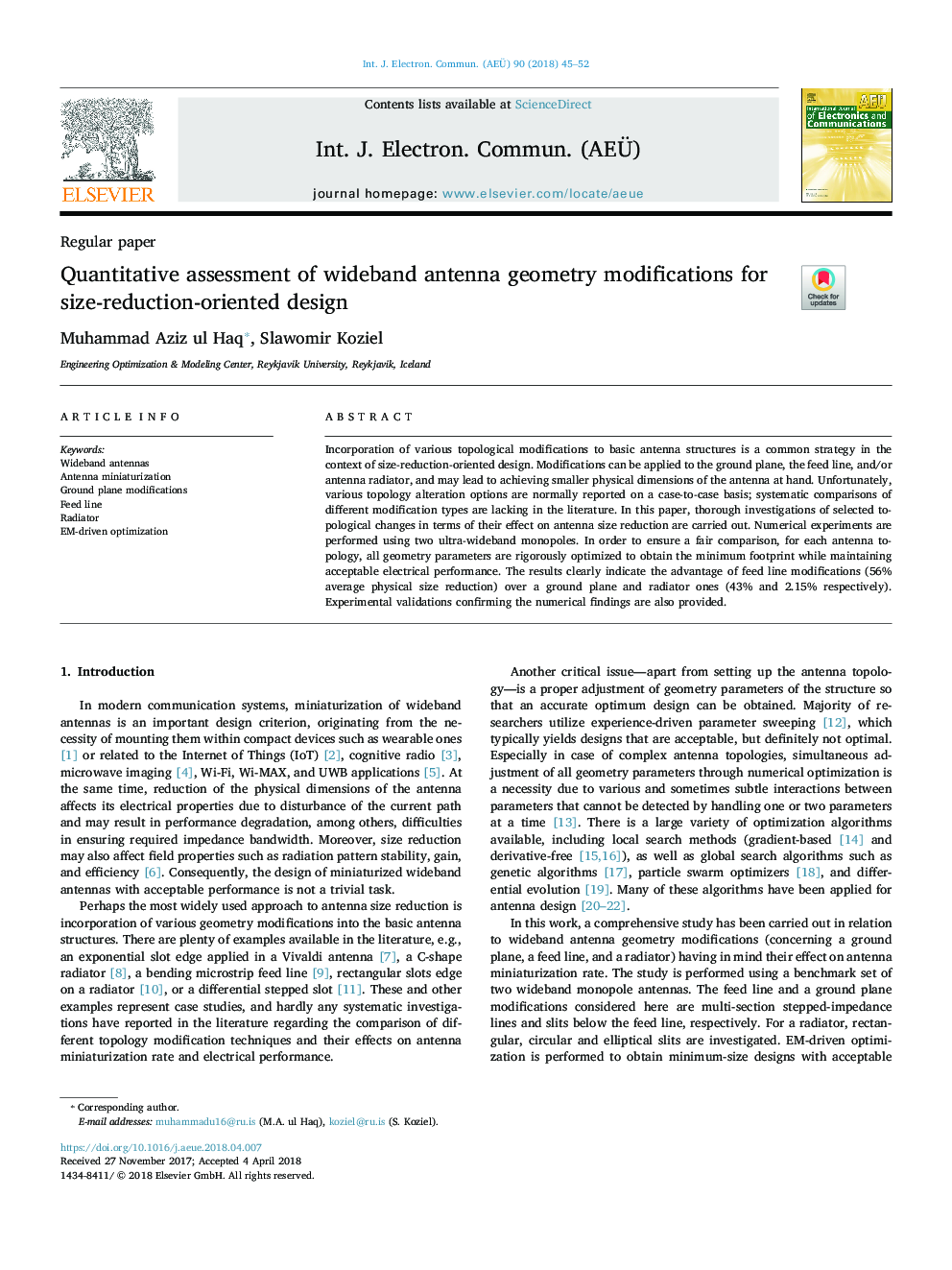| Article ID | Journal | Published Year | Pages | File Type |
|---|---|---|---|---|
| 6879178 | AEU - International Journal of Electronics and Communications | 2018 | 8 Pages |
Abstract
Incorporation of various topological modifications to basic antenna structures is a common strategy in the context of size-reduction-oriented design. Modifications can be applied to the ground plane, the feed line, and/or antenna radiator, and may lead to achieving smaller physical dimensions of the antenna at hand. Unfortunately, various topology alteration options are normally reported on a case-to-case basis; systematic comparisons of different modification types are lacking in the literature. In this paper, thorough investigations of selected topological changes in terms of their effect on antenna size reduction are carried out. Numerical experiments are performed using two ultra-wideband monopoles. In order to ensure a fair comparison, for each antenna topology, all geometry parameters are rigorously optimized to obtain the minimum footprint while maintaining acceptable electrical performance. The results clearly indicate the advantage of feed line modifications (56% average physical size reduction) over a ground plane and radiator ones (43% and 2.15% respectively). Experimental validations confirming the numerical findings are also provided.
Keywords
Related Topics
Physical Sciences and Engineering
Computer Science
Computer Networks and Communications
Authors
Muhammad Aziz ul Haq, Slawomir Koziel,
